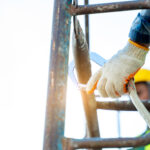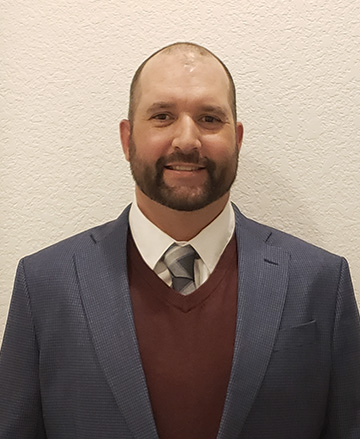Fall Protection can be a False Sense of Security
Every day workers are going to work, donning their personal fall arrest systems, and working from heights.
Unknowingly, or perhaps just numb to the fact, that they will contact the lower level in the event of a fall. This is in part because they failed to calculate their fall distance correctly. They could also be wearing their fall protection incorrectly. Without pointing fingers, whose fault is it? Is it the supervisors? Maybe it is the safety guys fault (it is always the safety guys’ fault!). Could it be lack of training? Maybe just disregard for the rules (one of the favorite excuses I hear from Superintendents and Foremen). All of these could be a piece of the puzzle. Through my experience it typically comes down to “one” thing, lack of PROPER training.
Yes, your company may have an amazing training program and all your employees may be trained on paper. You may be wondering why you continue to have issues. What is the deal? The training you sent them through may not have been sufficient. Yes, it might have covered all the necessary topics required by OSHA’s CFR 1926. It might have had fancy slides, cool music, and funny pictures, but it was not absorbed by the students.
I have seen in my own classroom, especially fall protection, the good old “head nod”.
The “head nod” of I understand everything you just told me regarding fall protection, as they look at their phone under the table. This tells me the subject matter is not being absorbed.
So, what can we do?

In today’s construction industry, there is a large workforce that just wants to make money, take care of their families and will do just about anything to accomplish their task. Including climbing on roofs with no fall protection, sitting through a class that they do not completely understand and give the “head nod” of understanding. Identifying this mentality and sending your team to a class that is in a language that they truly understand, is invaluable. It does no one any good to comprehend ½ of a fall protection class because they don’t speak the language. We continue to see these types of training courses happen with other companies.
Through my time conducting site inspections and talking with employees, I have found a very willing workforce, that once taught correctly, appreciates, and values their training.
Teaching basic fall protection rules in toolbox talks every week is a great start. Finding a company that caters to Spanish speaking students is a plus, and identifying the problem is a big step forward. Proper training will continue to be the top priority when it comes to fall protection.
Let’s get into the false sense of security issue with fall protection.
You are walking your site and you see 4 roofers laying down floor joists and they have too much slack in their ropes. There is no way it would protect them from a fall. Everyone in construction has seen this one at time or another. Let’s step back and observe this for a moment.

- The employee has his harness on
- Extra slack in his rope
- He is tied off to a proper anchor (if he is using the appropriate nails/screws)
- He is preforming his task as per what he thinks is 100% safe
The employee has done everything right except for too much slack in his lifeline. That one thing could get him seriously injured or killed. The employee is typically not doing this intentionally. Pulling everyone down and talking over what was just observed and using it as a teaching moment is the appropriate response.
How about this one, you are on a roof and you see a roof anchor and it only has 4 sheet metal screws in it and they are just long enough to penetrate the OSB.
What does this tell us? You guessed it, typically improper training. This is a problem we see in construction companies who hand their employees fall protection and an anchor and send them to the roof without instruction. You would be surprised at how many employees don’t know that anchors require certain nails and screws with a required shear strength to work correctly.
If employees are using fall protection incorrectly, it gives them a false sense of security. Employees are more apt to take unsafe chances when they think they are wearing fall protection correctly.
If we as an industry can take a step back and acknowledge the problem and not just give it the good old “head nod” we can have a more productive, better educated, and safer workplace.
MSC Safety Solutions has been a leader in training and on-site safety efforts. If you need assistance please let us be a part of your team.





